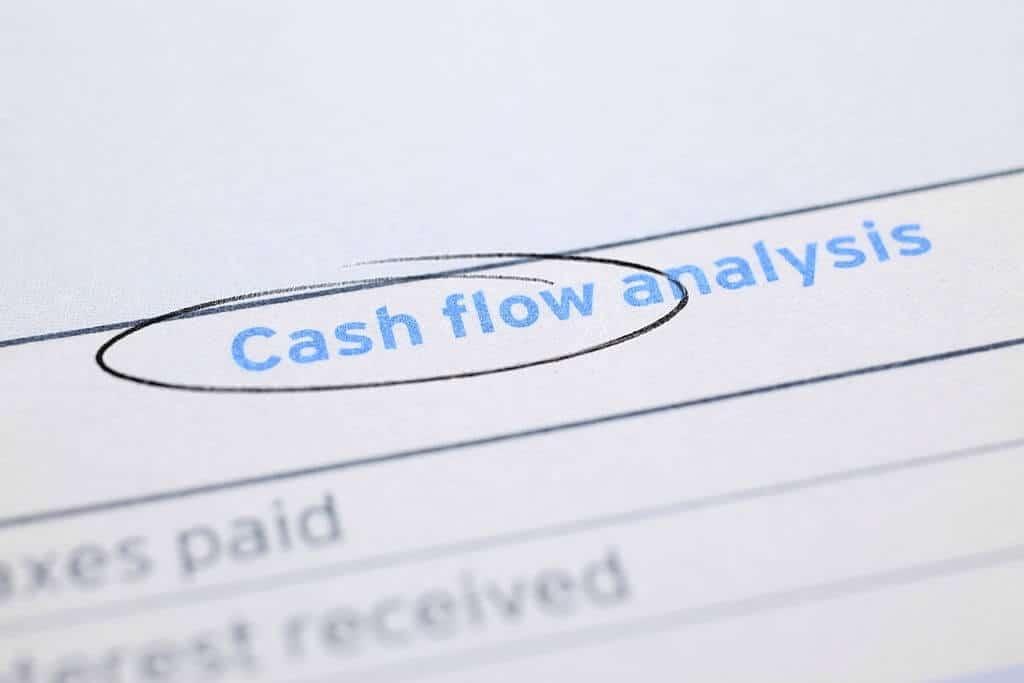Generating cash flow statements for a business is very important to keep owners updated with their investments.
These statements are important to avoid improper spending from the business’ funds.
In this post, we’ll talk about the two different methods and three important sections you need to know when preparing a cash flow loan statement.

What is a Cash Flow Statement?
A cash flow statement is one of the most important financial statements for your business.
So why is it so important? It traces the ins and outs of your business funds, which will be useful during the accounting period.
Individuals and organizations make their cash flow statements as frequently as possible — it can be done monthly, quarterly, and annually — to track the status of their businesses.
So how can cash flow statements help your business?
There are different ways a cash flow statement can help:
- To assess the current income, flow of money, and future income of your business.
- To use as the basis for budgeting.
- To manage the coming and going of cash.
Cash flow statements are important documents for evaluating your firm’s ability to generate cash to get a loan.
It’s a great way for private lenders to understand the financial capabilities of businesses to pay monthly mortgage payments.
Three Sections of a Cash Flow Statement
Operating Activities
This section in the cash flow statements focuses on any cash flow from your current assets and liabilities.
Operating activities in cash flow statements include the net income for the income statement, changes in working capital, and adjustments to net income.
Here are two presentations of operating cash flows that you can use for your business.
- Direct Presentation: This presentation focuses on the cash-in from sales, cash-out for capital expenditures, and many more. Although this is a simpler way to present a cash flow statement, it’s a rarely used method compared to the indirect presentation.
- Indirect Presentation: The indirect method focuses on the beginning of the business net income to the deductions from the amount for non-cash revenue and expense items.
Investing Activities: Investing activities in cash flow statements show the cash spent and generated such as investment in securities, physical assets, and many more.
Financing Activities: This section in the cash flow statements show how businesses manage their capital including the transactions (bonds, stock, dividends) of their investors through capital markets.
Cash Flow Definitions
Cash Flow: It represents the inflows and outflows of the net income of businesses.
Cash Balance: This is the cash on hand and demand deposits, which can be seen on the balance sheet.
Cash Equivalents: Cash equivalents represent the cash held as short-term investments, bank deposits, and other cash-convertible assets.

How do I Prepare a Cash Flow Statement?
Now that you’ve learned the three sections of a cash flow statement, it’s time to compile all the required documents and data for your cash flow preparation.
The first section of the cash statement flow is called operating activities. It can be represented through either the direct method or the indirect method.
The next section is called investment activities where you can add all the cash inflows from the maturity of your assets or sales and subtract it with all the cash outflows from your business expenditures.
The last section is called financing activities, which represents the cash flow from activities with non-current or long-term liabilities.
According to the International Accounting Standards Board (IASB), the direct method of reporting provides more useful information compared to the indirect method.
Most companies, however, prefer using the indirect method to represent their cash flows.
Direct Method for Cash Flow Statement
To prepare a cash flow statement using the direct method, you need to identify the revenue and expenses that were made during the reporting period.
Generally, the direct method takes more time and effort due to the different tasks like subtracting the actual cash outflows from inflows.
Here are the usual line items when using the direct method:
- Customer receipts
- Payments to suppliers
- Payments to employees
- Interest and dividends received
- Income tax payments
Although collecting every single detail from each type of cash receipt or payment consumes more time, the direct method shows more detail and effectively displays the business’ finances.
For instance, it can identify how much funds were allocated and spent on buying equipment during the reporting period.
Indirect Method for Cash Flow Statement
Compared to the direct method that needs to thoroughly run your business’ data, the indirect method is a simpler way to represent your business’ financial activities.
The indirect method is based on accrual basis accounting — an accounting method where expenses and revenue are recorded when a transaction occurs.
To use the indirect method on your cash flow statements, the first section of your statement — which is called operating activities — always starts with the net income for the reporting period followed by gains, losses, and non-cash expenses that need to be added back to or subtracted from net income.
Here are some non-cash activities that you can include in your cash flow statement:
- Depreciation
- Accounts payable
- Accounts receivable
- Inventory expenses
- Working capital changes
Cash flow statements play a major role in every business. It’s a great type of financial statement that shows the capability of a business to get a loan for their next investments.
Speaking of getting loans, Sprint Funding is an excellent lending company that offers different types of loans such as VA loans, FHA loans, Cash flow loans, and conventional loans.
If you want to know more about our services, you can contact us via:
Address: 131 E Fig Street #1 Fallbrook, CA 92028
Number: 866.687.1114 (Toll-Free) or fax us at 760.692.9938
Facebook: https://www.facebook.com/SprintFunding/





